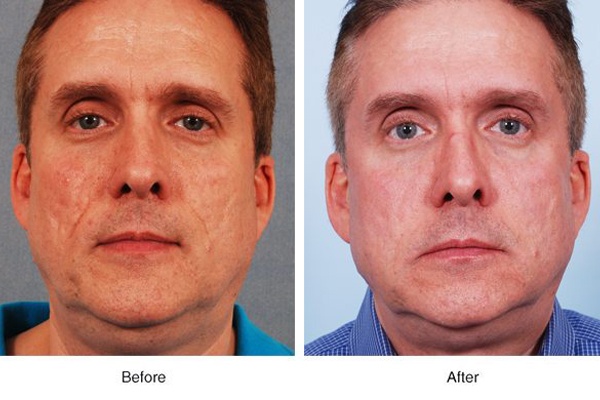A Comprehensive Overview to Taking Care Of Skin Problems: Concentrating On the Treatment of Acne Scars
Acne marks stand for a significant concern for numerous individuals, typically affecting self-worth and total skin wellness. Recognizing the numerous kinds of acne scars, such as hypertrophic and atrophic, is necessary for reliable monitoring and therapy.
Comprehending Acne Scars
Understanding acne scars entails identifying the intricate interaction between skin healing and the inflammatory processes that take place throughout acne break outs. Acne develops when hair follicles come to be obstructed with oil, dead skin cells, and germs, resulting in inflammation. acne scars. This inflammatory feedback is essential for battling infection however can also cause damages to the skin's tissue
When the body tries to heal itself, it produces collagen, a healthy protein necessary for skin structure. However, the amount and high quality of this collagen can vary, causing different kinds of marks. Factors affecting scar development include the severity of the acne, private skin type, genes, and the body's healing feedback.
Prompt management of breakouts lessens swelling and tissue damages, which are critical elements in mark growth. Ultimately, comprehending the hidden systems of acne and its recovery process is crucial for reliable management and prevention of acne scars.
Kinds Of Acne Marks
The intricacy of acne scars can be categorized into a number of distinctive kinds, each mirroring the underlying skin damage and healing action. The most typical kinds consist of atrophic marks, hypertrophic marks, and keloids.
These scars can even more be categorized right into icepick, boxcar, and rolling marks, each varying in shape and depth. skin rejuvenation treatments. Icepick marks are slim and deep, looking like small punctures, while boxcar marks have a bigger, extra angular look.
Hypertrophic scars, on the other hand, are elevated and arise from an overproduction of collagen during recovery. These marks may differ in dimension and can often fade gradually however may continue to be noticeable.
Keloids are a much more severe form of hypertrophic scarring, expanding beyond the original injury website and commonly needing more hostile treatment options. Recognizing these types is important for determining one of the most efficient therapy technique tailored to a person's particular mark type and skin problem.
Topical Therapies
Topical treatments play a crucial duty in handling acne marks, offering clients a variety of choices targeted at enhancing skin texture and look. These treatments mostly concentrate on promoting skin regrowth, decreasing coloring, and enhancing total skin tone.
One of one of the most widely made use of topical agents is retinoids, which are by-products of vitamin A. Retinoids stimulate collagen manufacturing and increase cell turn over, aiding to reduce the look of marks over time. Additionally, alpha hydroxy acids (AHAs) and beta hydroxy acids (BHAs) can scrub the skin, getting rid of dead skin cells and promoting a smoother surface area.
An additional effective classification includes topical antioxidants, such as vitamin C, which can assist to lighten hyperpigmentation associated with acne scars while supplying anti-inflammatory advantages. Additionally, silicone gels and sheets have actually been revealed to hydrate and flatten marks, making them much less noticeable.

Specialist Therapy Options
When it comes to resolving a lot more extreme acne scars, patients often transform to expert treatment choices that can deliver extra remarkable results than topical treatments alone. These interventions are generally carried out by skin specialists or certified experts and include numerous methods tailored to specific skin types and mark seriousness.
Among the most usual treatments is chemical peels, which utilize acids to scrub the skin and advertise regrowth. This technique can considerably reduce the appearance of shallow scars. Microneedling, an additional efficient alternative, entails developing micro-injuries in the skin to stimulate collagen production, improving appearance and reducing scars.
Laser therapy is additionally widely employed, with fractional lasers especially targeting marked regions while preserving bordering skin. This technique can generate amazing improvements in skin appearance over a number of sessions - skin rejuvenation treatments. In addition, dermal fillers are used to bring back quantity and smooth out uneven skin surfaces, providing prompt, albeit short-term, outcomes
Lifestyle and Home Solutions
Including way of life modifications and home treatments can play a significant function in handling acne marks, complementing expert treatments. Keeping a balanced diet plan rich in antioxidants, vitamins, and minerals can promote skin healing. Foods high in vitamin C, such as citrus fruits, and those including zinc, like nuts and seeds, promote skin regrowth and aid decrease swelling.
Hydration is likewise essential; alcohol consumption sufficient water maintains the skin hydrated, helping in its all-natural fixing procedures. Normal workout boosts blood circulation, which can boost nutrient delivery to the skin and boost general skin.
In enhancement to dietary adjustments, integrating topical natural remedy can be advantageous. Natural ingredients such as aloe tea, vera, and honey tree oil possess antibacterial and anti-inflammatory properties, which might help in decreasing the appearance of marks. Scrubing the skin with gentle scrubs can also promote cell turnover, helping in the fading of marks gradually.
Additionally, developing a constant skincare regimen that includes sun protection is vital, as UV exposure can dim marks. By integrating these way of living adjustments and home treatments, individuals can boost their skin's healing process and accomplish a more even complexion.
Final Thought

Recognizing acne marks entails recognizing the complex interplay between skin healing and the inflammatory procedures that happen during acne episodes. Aspects affecting scar development include the intensity of the acne, private skin type, genetics, and the body's recovery action.
These scars can even more be identified right into icepick, boxcar, and rolling marks, each varying in shape and depth. Icepick scars are slim and deep, appearing like tiny punctures, while boxcar marks have a broader, extra angular appearance.Effective monitoring of acne scars demands an extensive understanding of their kinds and the hidden mechanisms entailed in scar formation.